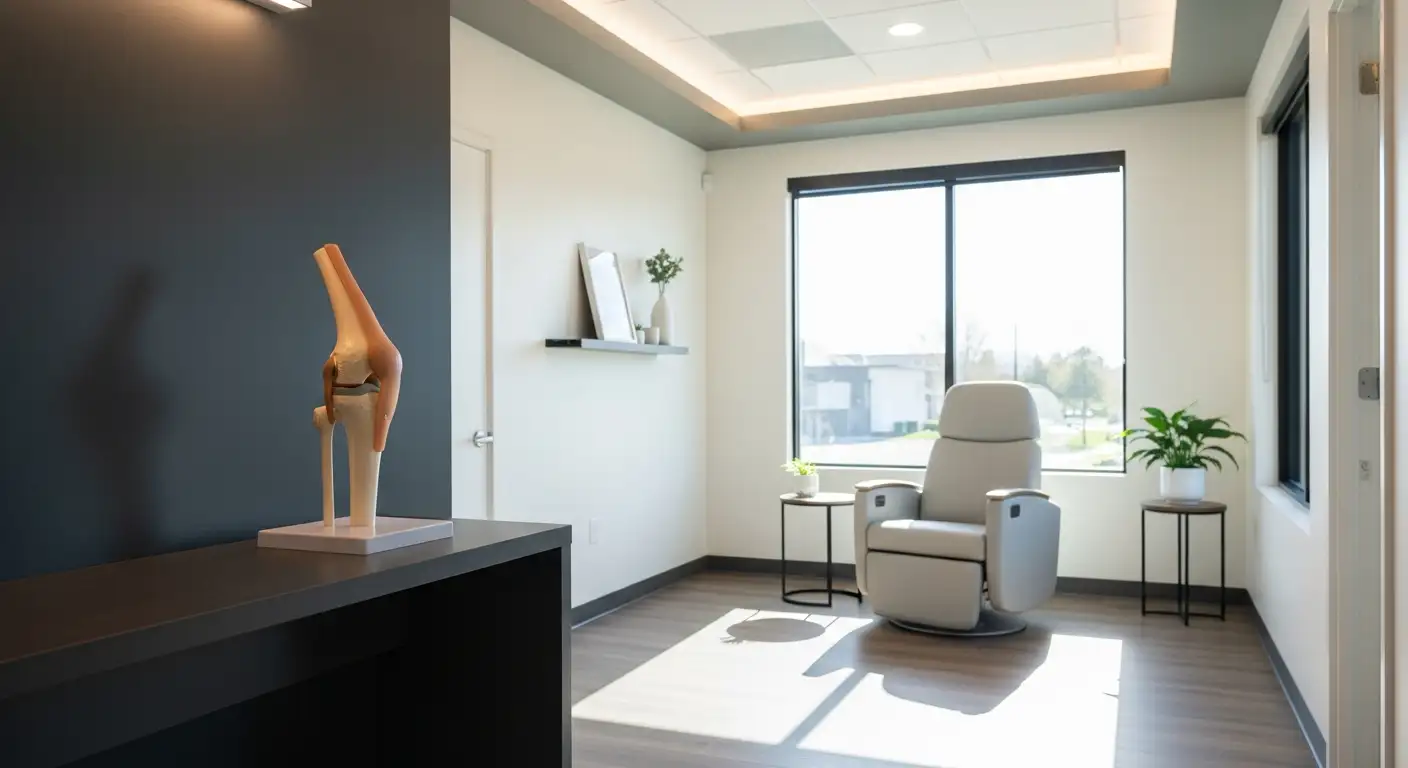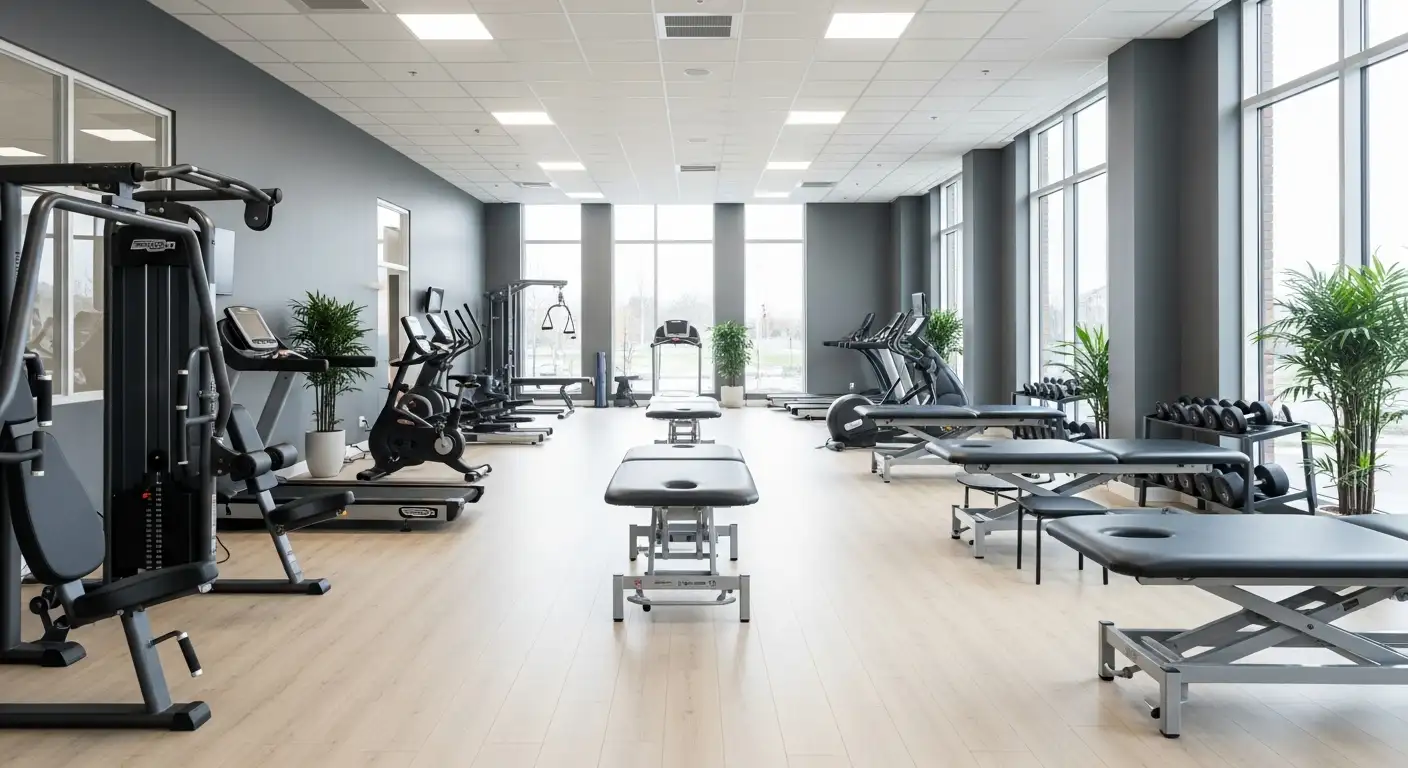Understanding Knee Pain
Knee pain is a common ailment that can stem from a variety of underlying conditions, and it can be particularly noticeable when descending stairs. By understanding the common causes and symptoms of knee pain, individuals can take proactive steps towards diagnosis and treatment.

Common Causes of Knee Pain
There are several conditions that can lead to knee pain when going down steps. These include, but are not limited to:
- Patellar tendinitis: This condition is the inflammation of the patellar tendon, the tissue connecting the kneecap (patella) to the shinbone (tibia). It's commonly seen in athletes involved in sports requiring jumping movements.
- Chondromalacia: This condition involves the softening and breakdown of the knee cartilage under the patella. It can lead to pain in the front (anterior) part of the knee, especially when going down stairs or hills.
- Patellofemoral pain syndrome: This is the most common cause of knee pain when going downstairs, characterized by a dull, aching pain behind and around the kneecap [2].
- IT band syndrome: This can cause knee pain when descending stairs, signaling pain on the outer side of the knee due to the iliotibial (IT) band becoming inflamed.
- Meniscus tears: These can lead to knee pain when going downstairs, often felt as a sharp, pinpoint pain that can worsen with certain movements.
- Arthritis: Particularly osteoarthritis, can cause knee pain when descending stairs. Symptoms often include morning stiffness, crepitus (a grinding or crackling sensation), and limited range of motion.
These conditions can be due to biomechanical issues, muscle imbalances, or poor movement patterns. It's crucial to identify the underlying cause to address the knee pain effectively.
Symptoms and Diagnosis
The symptoms of knee pain when going down steps can vary depending on the underlying condition. However, common symptoms can include sharp or dull pain, swelling, stiffness, or a popping or crackling sound. In some cases, discomfort may only occur when the knee is in motion, particularly during activities that exert pressure on the knee joint, such as descending stairs.
Diagnosis of knee pain typically involves a physical examination to assess the knee's range of motion, stability, strength, and overall function. Your healthcare provider may also order imaging tests such as X-rays or MRIs to obtain a detailed view of the knee structure. If you experience persistent knee pain, it's crucial to seek medical attention to identify the cause and determine the best course of treatment.
Knee Pain When Descending Stairs
For many, knee pain becomes particularly noticeable when going down steps. To better understand this, we need to dive into the forces at play during stair descent and the conditions that are commonly linked to stair-related knee pain.
Forces at Play During Stair Descent
When descending stairs, the force going through the kneecap is approximately 3.5 times the body weight, resulting in significant pressure on the knee. For example, a person weighing 120lbs would have around 420lbs of force going through the kneecap as they descend the stairs. This considerable force can exacerbate knee pain, especially for individuals with prevalent knee conditions.
Conditions Linked to Stair-Related Knee Pain
Knee pain when going down steps is a common issue and can be a symptom of various conditions:
- Patellar Tendinitis: This is inflammation of the patellar tendon, the tissue connecting the kneecap (patella) to the shinbone (tibia). It's a common cause of knee pain when descending stairs.
- Chondromalacia: This condition involves the softening and breakdown of the knee cartilage under the patella and can cause knee pain when descending stairs.
- Patellofemoral Pain Syndrome, IT Band Syndrome, and Meniscus Tears: These conditions can cause knee pain when going downstairs.
- Osteoarthritis: This is a common cause of knee pain when descending stairs, as the joint's protective cartilage wears down over time, leading to inflammation, pain, and stiffness [5].
Other contributing factors to knee pain when descending stairs can be knee instability, muscle weakness, excess body weight, or arthritis [6]. Pain radiating from the lumbar spine or hip to the knee could also be contributing factors.
Understanding the conditions linked to knee pain when going down steps can help in managing and treating the pain effectively. It's essential to seek professional advice for an accurate diagnosis and to discuss suitable treatment options.
Addressing Knee Pain
Addressing knee pain, particularly knee pain when going down steps, involves a multi-faceted approach. It often requires a combination of maintaining a healthy body weight, improving fitness levels, and incorporating specific exercises to strengthen the knee-supporting muscles.
Role of Body Weight and Fitness
Maintaining a healthy body weight is crucial in managing knee pain when descending stairs. Excess body weight can put additional stress on the knee joints, exacerbating pain and discomfort. Incorporating low-impact activities such as swimming or cycling in your workout routine can help manage body weight while reducing impact and stress on the knee joints [3].
Fitness level is another important factor in addressing knee pain. Building overall strength, flexibility, and endurance can help improve knee stability and function, thus reducing pain when navigating stairs. Proper warm-up and muscle strengthening exercises are vital in this regard.
Effective Exercises for Knee Support
Specific exercises can help strengthen the muscles around the knee, thus providing better support and stability when going down steps. This can potentially alleviate knee pain during stair descent.
Here are a few recommended exercises and how they benefit the knee:
- Lunges: Improve strength and stability in the quadriceps, hamstrings, and glutes.
- Squats: Enhance the strength of the quadriceps, a key muscle group that stabilizes the knee.
- Leg Presses: Strengthens the quadriceps and hamstrings, which help support the knee joint.
- Leg Curls: Targets the hamstring muscles, providing better support for the knee from the back.
In addition to these exercises, keeping the knee in proper alignment during movement, avoiding excessive inward movement of the knees (knee valgus), and maintaining good hip control are essential for preventing and managing knee pain when descending stairs.
Before starting any exercise program, it's important to consult with a healthcare provider or a physical therapist. They can guide you on the correct technique and intensity of exercises to ensure safety and effectiveness. Remember, managing knee pain effectively involves a combination of different strategies tailored to your individual needs and conditions.
Professional Intervention for Knee Pain
While some knee pain can be managed with home remedies and lifestyle changes, there are instances when professional help is required. This section provides guidance on when to seek medical intervention and what treatment options and therapies may be available.
When to Seek Medical Help
Knee pain when going down steps can be a symptom of conditions such as torn meniscus, patellar tendinitis, knee osteoarthritis, or bursitis. While some discomfort can be managed at home, certain symptoms indicate the need for urgent medical attention. These include severe pain, swelling, or redness, inability to bear weight on the knee, and joint instability.
If you experience these symptoms, seeking medical attention promptly can help prevent further injury and ensure appropriate treatment. The diagnosis often involves a physical exam, imaging tests like X-rays or MRI scans, and sometimes arthroscopy to view the inside of the joint.
Treatment Options and Therapies
The treatment for knee pain when descending stairs varies depending on the cause. It may include rest, ice, pain relief medications, physical therapy, injections, or surgery [8].
Consulting with a physical therapist is advised for individuals experiencing knee pain when descending stairs. They can help to diagnose knee pain issues and develop a safe and effective treatment plan. This plan may involve addressing muscle imbalances through strengthening surrounding muscles, including quadriceps, hamstrings, hip adductors, gluteal muscles, and calf muscles. Starting with non-weightbearing exercises and progressing to more functional positions is recommended to strengthen muscles without worsening tissue irritation.
Other measures such as stretching, taping, and bracing may also be included in a personalized treatment plan to address knee pain when descending stairs effectively.
In conclusion, knee pain when going down steps should not be ignored. Reaching out to a professional for a proper diagnosis and treatment plan is crucial in managing the pain and preventing further complications.
Additional Measures to Alleviate Knee Pain
While professional intervention and regular exercises are key in treating knee pain when going down steps, there are additional measures that can be incorporated into daily life to further alleviate discomfort. These include using correct footwear and assistive devices.
Importance of Correct Footwear
Using the correct footwear can help alleviate knee pain when descending stairs by providing proper support and cushioning to the knees. The right shoes can distribute weight evenly when walking, reducing the pressure on the knees.
Moreover, maintaining a healthy body weight and incorporating low-impact activities like swimming or cycling in the workout routine can also help alleviate knee pain when going down stairs by reducing the impact and stress on the knee joints.
Role of Assistive Devices
Assistive devices such as walking canes can provide additional support and stability when going down steps. A study has shown that using a walking cane can reduce the forces through the medial side of the knee by 15-45%, providing extra support and alleviating knee pain on stairs.
Ankle weights or shoe inserts can also be used to increase the stretch during exercises like prone knee hangs for extension, which can help improve knee flexibility and reduce stiffness leading to knee pain on stairs.
It's recommended to aim for 0-110 degrees of knee flexion to be able to walk upstairs normally with only one foot on each step, emphasizing the importance of improving knee mobility to reduce stiffness and knee pain on stairs.
In conclusion, while knee pain when going down steps can be challenging to manage, a combination of professional intervention, regular exercises, correct footwear, and the use of assistive devices can help alleviate the discomfort and improve mobility.
References
[2]: https://www.verywellhealth.com/knee-pain-walking-downstairs-5095164
[3]: https://www.posturedirect.com/knee-pain-when-going-down-stairs/
[4]: https://www.knee-pain-explained.com/knee-pain-going-down-stairs.html
[5]: https://arthritiskneepain.com/uncategorized/knee-pain-going-down-stairs/
[6]: https://www.livestrong.com/article/552150-knee-exercises-for-going-down-stairs/
[7]: https://doctorsofphysicaltherapy.com/wellness/why-does-my-knee-hurt-when-walking-down-stairs/
[8]: https://www.mayoclinic.org/diseases-conditions/knee-pain/symptoms-causes/syc-20350849
[9]: https://www.aposhealth.com/blog/knee-pain-going-down-stairs-heres-what-you-need-to-know/
[10]: https://www.knee-pain-explained.com/knee-pain-on-stairs.html





